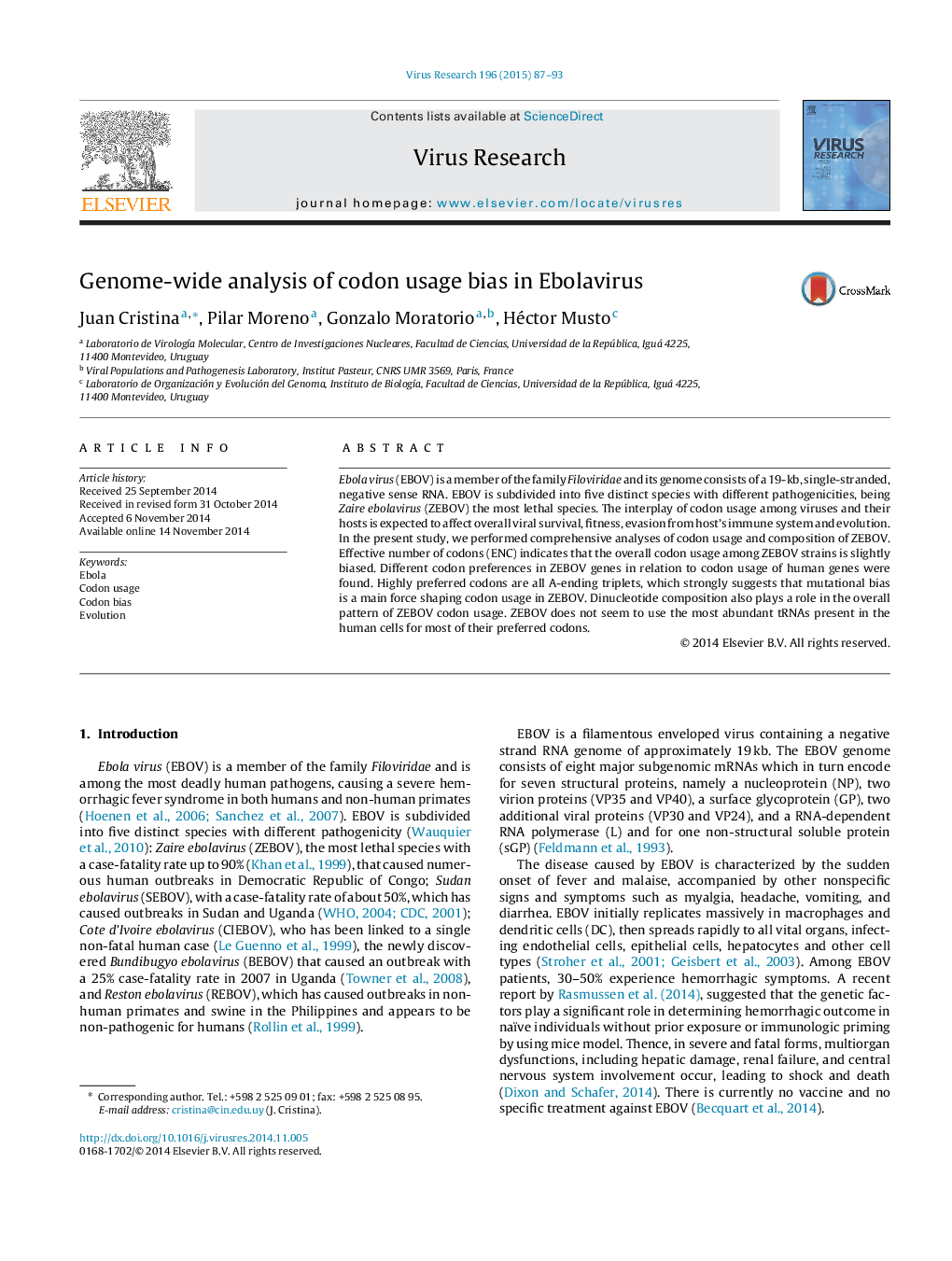| Article ID | Journal | Published Year | Pages | File Type |
|---|---|---|---|---|
| 6142270 | Virus Research | 2015 | 7 Pages |
Abstract
Ebola virus (EBOV) is a member of the family Filoviridae and its genome consists of a 19-kb, single-stranded, negative sense RNA. EBOV is subdivided into five distinct species with different pathogenicities, being Zaire ebolavirus (ZEBOV) the most lethal species. The interplay of codon usage among viruses and their hosts is expected to affect overall viral survival, fitness, evasion from host's immune system and evolution. In the present study, we performed comprehensive analyses of codon usage and composition of ZEBOV. Effective number of codons (ENC) indicates that the overall codon usage among ZEBOV strains is slightly biased. Different codon preferences in ZEBOV genes in relation to codon usage of human genes were found. Highly preferred codons are all A-ending triplets, which strongly suggests that mutational bias is a main force shaping codon usage in ZEBOV. Dinucleotide composition also plays a role in the overall pattern of ZEBOV codon usage. ZEBOV does not seem to use the most abundant tRNAs present in the human cells for most of their preferred codons.
Keywords
Related Topics
Life Sciences
Immunology and Microbiology
Virology
Authors
Juan Cristina, Pilar Moreno, Gonzalo Moratorio, Héctor Musto,
